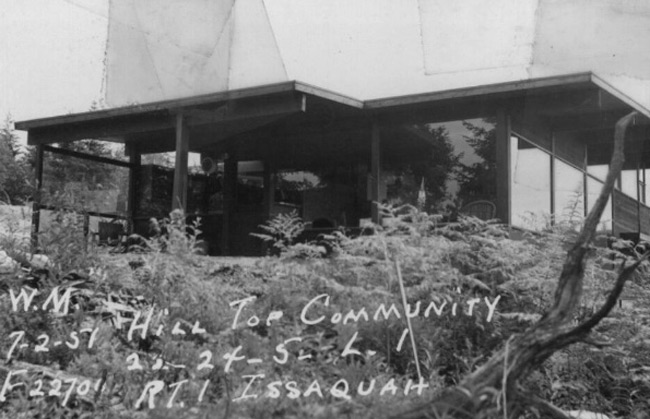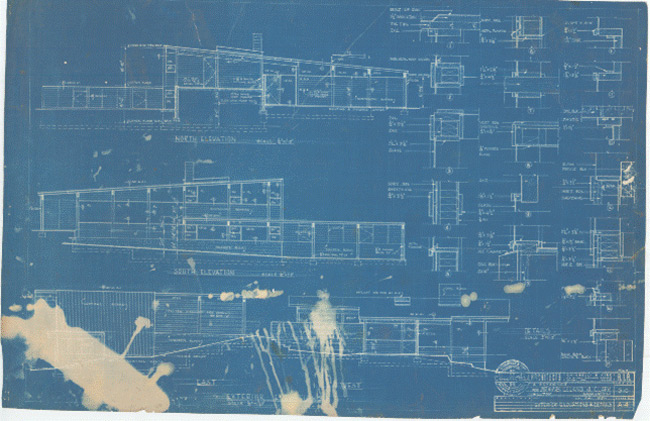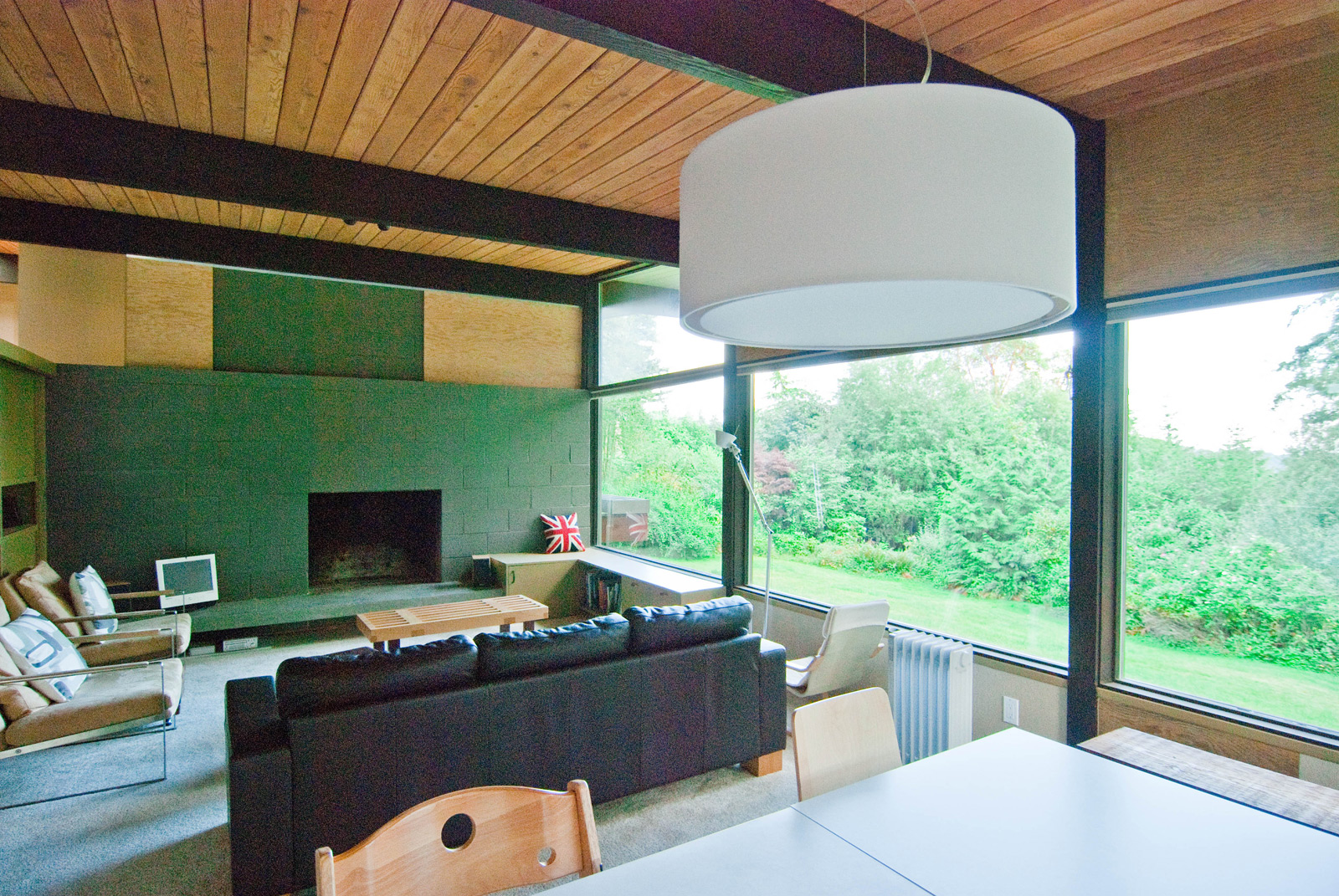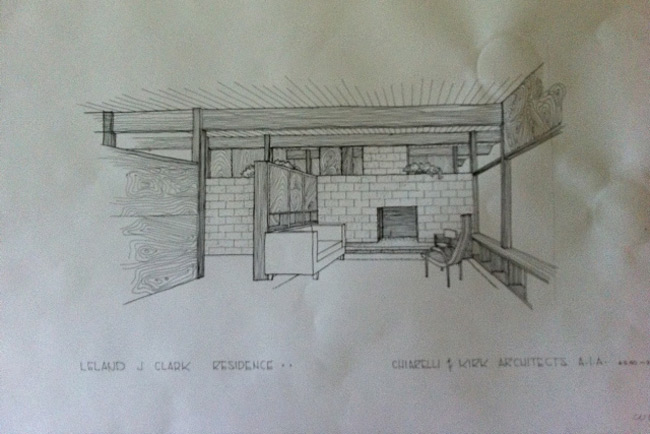
An acquaintance of ours recently bought a house in the prestigious MCM Hilltop Community about 10 miles east of Seattle. Since we’re in the neighborhood working on a project, we were lucky enough to be invited over for the tour, and we weren’t let down. It’s a gem of a home, designed by Paul Kirk in 1950, the home encapsulates everything we admire about good design. Because the architecture was well thought-out and deliberate, the home had been well cared for over the years and we got a very good idea of the original materials and finishes. Every time we turned a corner or looked in a different room, there were a handful of design ideas that stood out; ideas that, unfortunately, have been lost over the years.

The more mid-century modern homes we see and work on, the more surprised we are that so many good design ideas have been disregarded or forgotten over the last 60 years. These ideas aren’t just “features” or fashionable details; they’re significant concepts that allow people more opportunity in their lives and an extraordinary quality of life. The ideas we’re referring to aren’t just applicable to mid-century modernism either, they’re universal ideas about housing and they apply to most contemporary housing. Given how important these ideas are, we couldn’t help but make some notes and snap a few photos; today’s post boils down our thoughts to a quick-hit of 10 Forgotten Lessons of MCM Design (that should never have been forgotten in the first place). Here goes:
1. Modestly nestling the home into the site rather than building “on top of” the ground feels better. It keeps the proportions of the home to a more natural scale and creates a more comfortable setting. It’s also a considerate way to design that affords your neighbors more view and day light. Part of this strategy involves keeping much of the landscaping; this allows certain trees or plants to become view points from inside the home, or while you’re standing on the terrace, it gives you something to look at astutely while you sip your gin martini.
2. Keep it simple. It’s a consistent rule of thumb in MCM design. Roof planes tend to be simple shed roofs which offer plenty of daylight and view at the high side; the low profile on the opposite side maintains the privacy and low horizontal proportions. They’re straight-forward to frame, handsome visually, and cost-effective.

3. Good design creates a progression between privacy and transparency. Often, upon approaching a MCM home, the entryway is solid and private. Once you enter the home the interior becomes increasingly transparent, until you reach a common area like the living room where the interiors open up to the view and landscaping. This sequence of experiences accomplishes several things; it maintains the privacy of the home toward the street, it creates a pleasurable experience moving through the spaces, and it rewards the viewer with a delightful view at the end (be it of a mountain, a forest or simply a well manicured back yard).
4. Connecting the inside to the outside creates harmony with the site. One of the subtlest, albeit most pleasing, design moves in MCM design is the intentional move to extend the material of a wall from inside to outside (or vice versa). This could be an exterior brick wall that extends into an entry area or an interior cedar wall that continues out to frame a courtyard.

5. Old school passive design is highly sustainable. There are a lot of terms being thrown around these days; sustainability, passive house design, and the overly abused “green-design”. Whether these terms actually benefit the home or environment depends on the situation, but the classic examples of passive design are so sensible that they should be incorporated into every house (and without throwing around a bunch of marketing terms). One of the best examples of this occurs at the roof: well designed eaves are calibrated to keep the interiors shaded during the summer months but allow direct sunlight into the home during the chilly winters. Smart, cost-effective and sensible.
6. Small, efficient bedrooms are perfectly pleasant. Bedrooms don’t need to incorporate lounge areas and recreational space; that’s what lounges and rec-rooms are for. Often with the smaller bedrooms we see in MCM homes, the ergonomics are more deliberate and the view out the window is more appreciated. Smaller bedrooms also cause the family to spend more time together rather than secluding everyone in their own bedrooms all day playing X-Box.

7. Outdoor rooms are just as important as indoor rooms. In a temperate climate, like the Pacific Northwest, you can spend a great deal of time outside. Extending the home’s roof out further is a cost-effective way to keep the rain off your outdoor dinner party in addition to defining the space. With a few intentional design moves, a sense of place is created and the outdoor room quickly becomes one of the most treasured areas of a home.
8. Screen walls offer privacy without cordoning off the interiors. Well designed houses are typically open and spacious (regardless of square footage); one of the best ways to maintain privacy, without jeopardizing the quality of the spaces inside, is by using architectural elements that don’t touch the ceiling. These could be screens, cabinets or panels that frame views and conceal other areas. Etch-matte glass panels make for great screens because they let light in; when backlit they also tend to glow. When depth allows, cabinets provide screening and additional storage. Simple panels also allow for new materials and textures to compliment the home. The same applies at the exterior; a strategically placed privacy screen can eliminate the temptation to encircle the entire yard with a 6 foot high fence, bleck!

9. Let nature do the work. MCM design is very clever about using the inherent characteristics of materials as finishes within the home. The MCM design philosophy is all about authenticity and once you put on your authenticity thinking cap, materials like CMU blocks, plywood, and car decking look beautiful; they look exactly like what they’re doing. There are a couple of additional benefits here; it limits the “decoration” of a project and simplifies the decision making process, most of the materials also warm up the interiors, and lastly, it’s typically more cost-effective to leave materials just the way they are.
10. Quality of light is more important than the light fixture. Nothing bothers us more than lights that are overdesigned. While it’s appropriate to have a couple of special, well-designed lights within the home (often above the dining room table or at the kitchen island) for the most part we want the light without having to see the light fixture. MCM design is brilliant in this regard; lights are often tucked into soffits and softly wash light over a wall, or they’re hidden on top of a bank of cabinets to highlight an exposed wood ceiling.
Those are just 10 design ideas that jumped out at us on our recent house tour, there are hundreds more. Let us know about your favorite MCM design concepts that should have a role in contemporary design.
A huge thanks goes out to Andre and his lovely family for inviting us into their home.
Cheers from team BUILD





